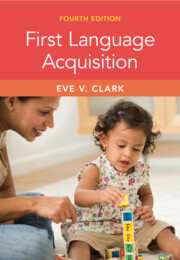12873 results
A First Course in Magnetohydrodynamics
- Coming soon
-
- Expected online publication date:
- January 2025
- Print publication:
- 31 October 2024
-
- Book
- Export citation
Emergency Department Boarding Time Is Associated with Functional Decline in Older Adults Six Months Post Discharge
-
- Journal:
- Canadian Journal on Aging / La Revue canadienne du vieillissement , First View
- Published online by Cambridge University Press:
- 18 September 2024, pp. 1-9
-
- Article
-
- You have access
- Open access
- HTML
- Export citation
Correlations between X-rays, visible light and drive-beam energy loss observed in plasma wakefield acceleration experiments at FACET-II
- Part of
-
- Journal:
- Journal of Plasma Physics / Volume 90 / Issue 4 / August 2024
- Published online by Cambridge University Press:
- 18 September 2024, 965900401
-
- Article
- Export citation
General practitioner and nurse experiences of type 2 diabetes management and prescribing in primary care: a qualitative review following the introduction of funded SGLT2i/GLP1RA medications in Aotearoa New Zealand
-
- Journal:
- Primary Health Care Research & Development / Volume 25 / 2024
- Published online by Cambridge University Press:
- 16 September 2024, e34
-
- Article
-
- You have access
- Open access
- HTML
- Export citation
Methylome-wide association study of multidimensional resilience
-
- Journal:
- Development and Psychopathology , First View
- Published online by Cambridge University Press:
- 16 September 2024, pp. 1-12
-
- Article
-
- You have access
- Open access
- HTML
- Export citation
Motivation to Motivate: Pilot of motivational interview training in a tertiary university hospital
-
- Journal:
- European Psychiatry / Volume 67 / Issue S1 / April 2024
- Published online by Cambridge University Press:
- 27 August 2024, p. S181
-
- Article
-
- You have access
- Open access
- Export citation
The psychosocial assessment of heart transplant candidates in Ireland
-
- Journal:
- European Psychiatry / Volume 67 / Issue S1 / April 2024
- Published online by Cambridge University Press:
- 27 August 2024, p. S96
-
- Article
-
- You have access
- Open access
- Export citation
Health and Social Care Staff Awareness of Menopausal Symptoms in Adults With Intellectual Disability: Results From a Survey
-
- Journal:
- BJPsych Open / Volume 10 / Issue S1 / June 2024
- Published online by Cambridge University Press:
- 01 August 2024, p. S177
-
- Article
-
- You have access
- Open access
- Export citation
SPEED (Supporting Psychiatry Experience and Education in District-Hospitals), a Pilot Program for Foundation Doctors
-
- Journal:
- BJPsych Open / Volume 10 / Issue S1 / June 2024
- Published online by Cambridge University Press:
- 01 August 2024, p. S103
-
- Article
-
- You have access
- Open access
- Export citation
Improving Carers’ Engagement for Patients Admitted to Psychiatric Intensive Care Unit (PICU): A Quality Improvement Project
-
- Journal:
- BJPsych Open / Volume 10 / Issue S1 / June 2024
- Published online by Cambridge University Press:
- 01 August 2024, p. S145
-
- Article
-
- You have access
- Open access
- Export citation
4 - Foreign and Defence Policy
-
-
- Book:
- The Conservative Effect, 2010–2024
- Published online:
- 24 July 2024
- Print publication:
- 27 June 2024, pp 102-130
-
- Chapter
- Export citation

First Language Acquisition
- Coming soon
-
- Expected online publication date:
- June 2024
- Print publication:
- 20 June 2024
-
- Textbook
- Export citation
13 - The Metre and Form of the Commedia
- from Part I - A Grammar of the Commedia
-
- Book:
- Dante's <i>Divine Comedy</i>
- Published online:
- 23 May 2024
- Print publication:
- 30 May 2024, pp 84-94
-
- Chapter
- Export citation
22 - Section 9: Pd. 1. 1–36; Pd. 9. 31–42
- from Part II - Passages for Commentary and Close – Reading
-
- Book:
- Dante's <i>Divine Comedy</i>
- Published online:
- 23 May 2024
- Print publication:
- 30 May 2024, pp 186-198
-
- Chapter
- Export citation
A Guide to Further Reading
-
- Book:
- Dante's <i>Divine Comedy</i>
- Published online:
- 23 May 2024
- Print publication:
- 30 May 2024, pp 249-253
-
- Chapter
- Export citation
5 - Nouns
- from Part I - A Grammar of the Commedia
-
- Book:
- Dante's <i>Divine Comedy</i>
- Published online:
- 23 May 2024
- Print publication:
- 30 May 2024, pp 27-30
-
- Chapter
- Export citation
Part II - Passages for Commentary and Close – Reading
-
- Book:
- Dante's <i>Divine Comedy</i>
- Published online:
- 23 May 2024
- Print publication:
- 30 May 2024, pp 95-96
-
- Chapter
- Export citation
11 - Adverbs
- from Part I - A Grammar of the Commedia
-
- Book:
- Dante's <i>Divine Comedy</i>
- Published online:
- 23 May 2024
- Print publication:
- 30 May 2024, pp 52-55
-
- Chapter
- Export citation

